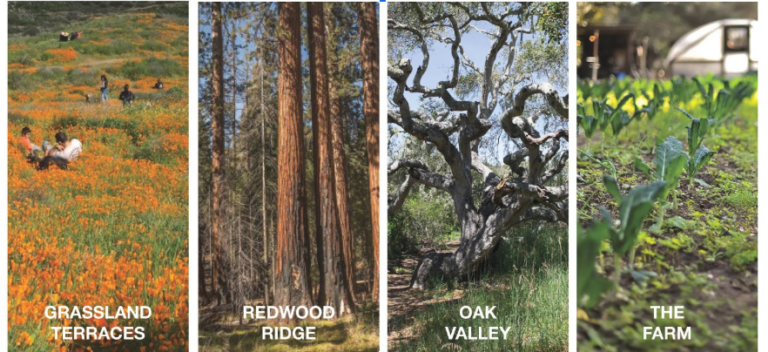Even the most adventurous of us can admit the daily grind gets in the way of communing with nature. While we are intentional about integrating outdoor time into the school day whenever possible—from athletics and PE on the various sports fields to outdoor study on the reading patios and projects like gardening, photography, or the Big Build––the North Campus is largely characterized by its many beautiful indoor learning spaces. Our new South Campus Master Plan proposes to balance out our paved surfaces with abundant green spaces that reflect the site’s natural ecology and offer many opportunities to learn and relax outdoors.
We know nature provides a sense of calm and well-being: we’ve felt it lower our shoulders; we’ve read books like Florence Williams’s The Nature Fix. Beyond balance, however, nature helps children in surprising ways. Dr. Ming Kuo, Professor of Environmental Psychology at the University of Illinois–Urbana Champaign, writes, “Evidence suggests contact with nature helps with boosting academic achievement, reducing the achievement gaps between different ethnic and socioeconomic groups, and countering the rise in various mental and physical disorders.”
We can turn to nature, then, to uphold our first two mission pillars––scholarship and diversity––and if you’re wondering about citizenship, look no further than Florence Williams: “Short exposures to nature can make us less aggressive, more creative, more civic-minded, and healthier overall.”

The South Campus is an ecologically rich site composed of five distinct areas: Grassland Terraces, Redwood Ridge, Oak Valley, The Farm, which will be carefully restored.
The new South Campus is a tremendous opportunity to embody these values and help our students grow into happy, healthy, and eco-minded adults. Just a couple of weeks ago, a group of administrators, faculty members, and students gathered with our architects (Skidmore, Owings and Merrill, and Tom Leader Studios) to dream up world-class green spaces, dedicated to interdisciplinary outdoor education––and we’re excited to share some of the wild and wonderful possibilities.


In October, students, faculty, and administrators participated in a creative working session with our architects to explore how different disciplines––from physics and robotics to creative writing––could make use of the new outdoor spaces on our South Campus.
A walking path curls into a labyrinth, offering peace. A meadow grows bright with wild poppies. Students read in hammocks, harvest the vegetables grown in an expansive garden, write nature-inspired poetry in outdoor classroom, and study native flora and fauna in the native botanical gardens.

Our hope is that these drawings will soon become reality! We’ve submitted our plan to the City of Oakland, and they are currently studying our proposal and will create a draft Environmental Impact Report to be released sometime next year. If you’re as excited about the new greenery as we are, please help us advocate, volunteering to voice your enthusiastic support once we get a date to present the merits of this project before the Oakland Planning Commission. Sign up by emailing communications@headroyce.org.
The Master Plan is centered on four key elements, including the addition of innovative and flexible STEM and collaborative learning spaces; a state-of-the-art performing arts and community center; improvements to traffic flow and safety via a new internal loop driveway and pedestrian tunnel; and expansive new green spaces dedicated to outdoor learning. For more details, visit https://www.headroyce.org/about-us/master-plan.




Students in Emily Miller’s 7th and 8th grade art classes recently studied the history of botanical illustration and created a “Head-Royce Florilegium,” a collection of botanical watercolors of plants that grow on campus.
Across Lincoln Avenue, student-artists will find new models. We’ll say goodbye to dry, non-native species like Eucalyptus, and we’ll plant new native trees—all with a wide potential for study, from ecology and gardening to art.






